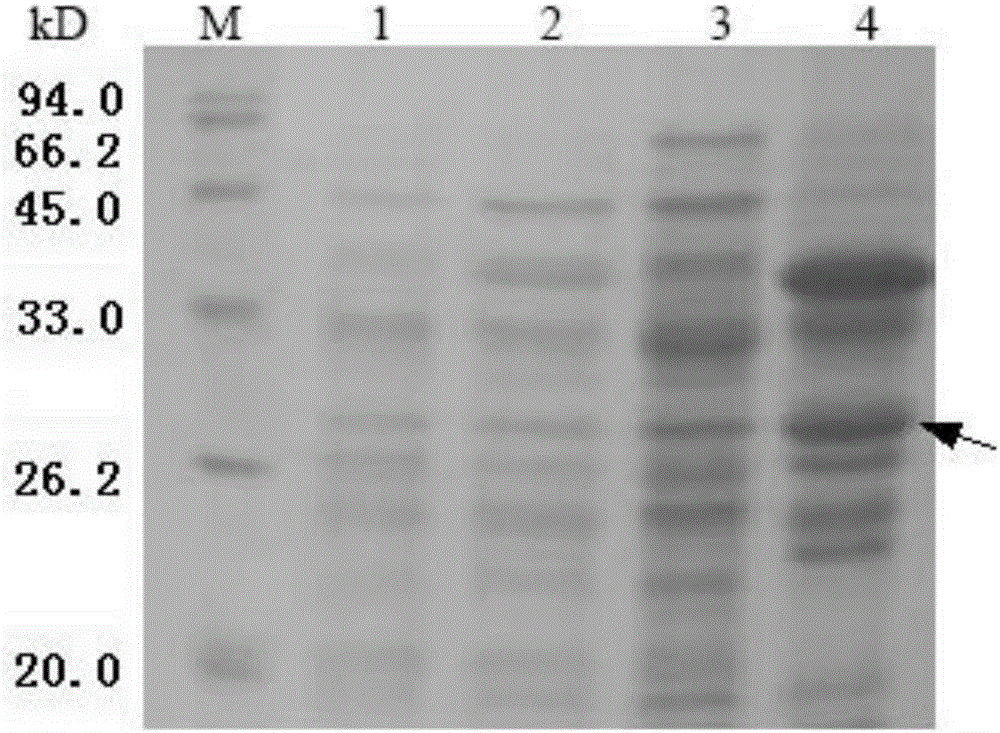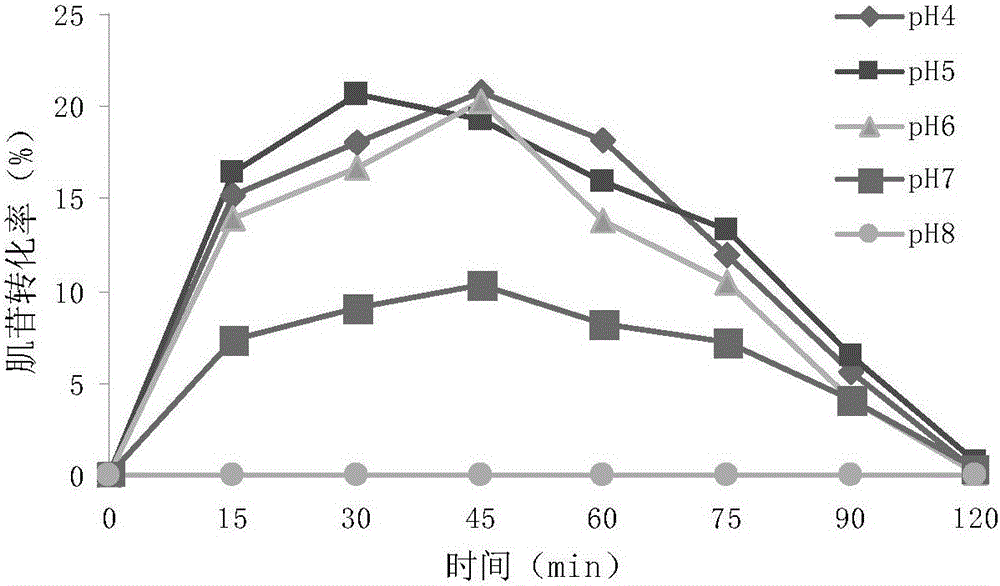Application of acid phosphatase and related biological materials thereof in constructing phosphate-solubilizing engineering bacteria
A phosphohydrolase and phosphorus-dissolving technology, applied in microorganism-based methods, applications, microorganisms, etc., can solve the problems of many by-products and difficult purification.
- Summary
- Abstract
- Description
- Claims
- Application Information
AI Technical Summary
Problems solved by technology
Method used
Image
Examples
Embodiment 1
[0058] Embodiment 1, preparation and functional verification of acid phosphatase BmacpA
[0059] 1. Cloning of BmacpA gene and BmacpB gene
[0060] Genomic DNA of Bacillus megaterium ACCC10010 and Bacillus megaterium ACCC02970 were extracted respectively, using the genomic DNA of Bacillus megaterium ACCC10010 as a template, using P1 and P2 as primers, PCR amplified the BmacpA gene; using the genomic DNA of Bacillus megaterium ACCC02970 as a template, Using P3 and P4 as primers, PCR amplified BmacpB gene. Among them, the sequences of P1, P2, P3 and P4 are as follows: P1: 5′-ATGTATGTGAAACGATATCG-3′, P2: 5′-CTACTTTTTGTCGAACACATA-3′, P3: 5′-ATGGTAAATCGCACTACAAA-3′, P4: 5′-CTATTTTTGGTTATATAAGC-3 '.
[0061] The obtained BmacpA gene PCR product and the BmacpB gene PCR product are subjected to electrophoresis respectively, and the results show that the BmacpA gene PCR product and the BmacpB gene PCR product are about 600bp bands, and the BmacpA gene PCR product and the BmacpB gene ...
Embodiment 2
[0106] Embodiment 2, the cultivation and functional identification of acid phosphatase phosphate-dissolving engineering bacteria
[0107] 1. Construction of Bacillus megaterium acid phosphatase BmacpA gene shuttle expression vector
[0108] In order to obtain phosphate-soluble engineering bacteria that highly express Bacillus megaterium acid phosphatase BmacpA gene, it is necessary to first construct a shuttle expression vector that can express across hosts. pHT43 (product of German MoBiTec company, purchased from Wuhan Miaoling Biotechnology Co., Ltd.) is a commonly used shuttle expression vector, carrying BamHI and XbaI enzyme recognition sites, with ampicillin and chloramphenicol resistance genes, induced by IPTG, can highly Level secreted expression of target protein. DNAMAN software was used to analyze the gene sequence of Bacillus megaterium acid phosphatase BmacpA, and it was found that there were no restriction sites of BamHI and XbaI, and the recombinant plasmid expr...
PUM
 Login to View More
Login to View More Abstract
Description
Claims
Application Information
 Login to View More
Login to View More - R&D
- Intellectual Property
- Life Sciences
- Materials
- Tech Scout
- Unparalleled Data Quality
- Higher Quality Content
- 60% Fewer Hallucinations
Browse by: Latest US Patents, China's latest patents, Technical Efficacy Thesaurus, Application Domain, Technology Topic, Popular Technical Reports.
© 2025 PatSnap. All rights reserved.Legal|Privacy policy|Modern Slavery Act Transparency Statement|Sitemap|About US| Contact US: help@patsnap.com



